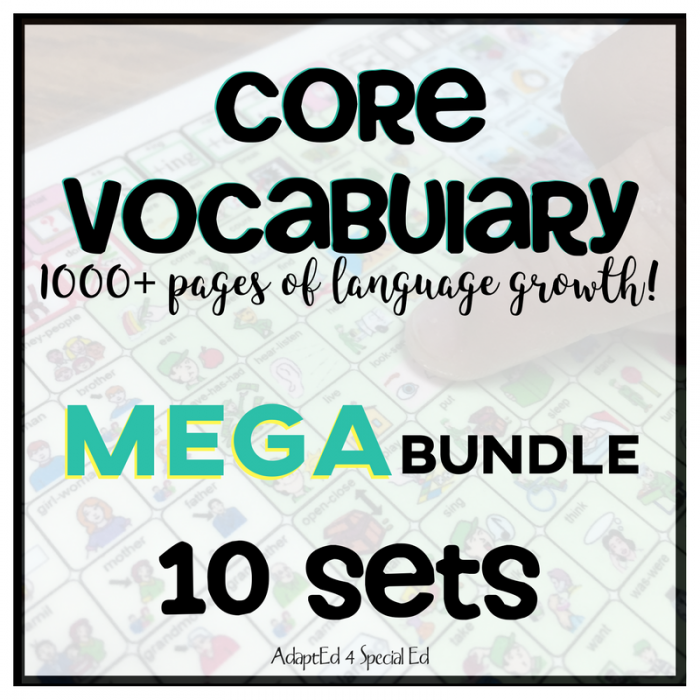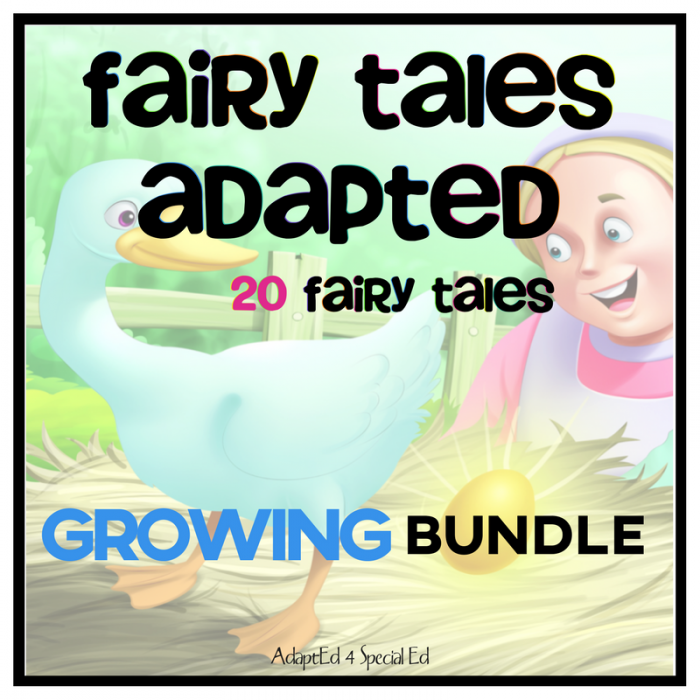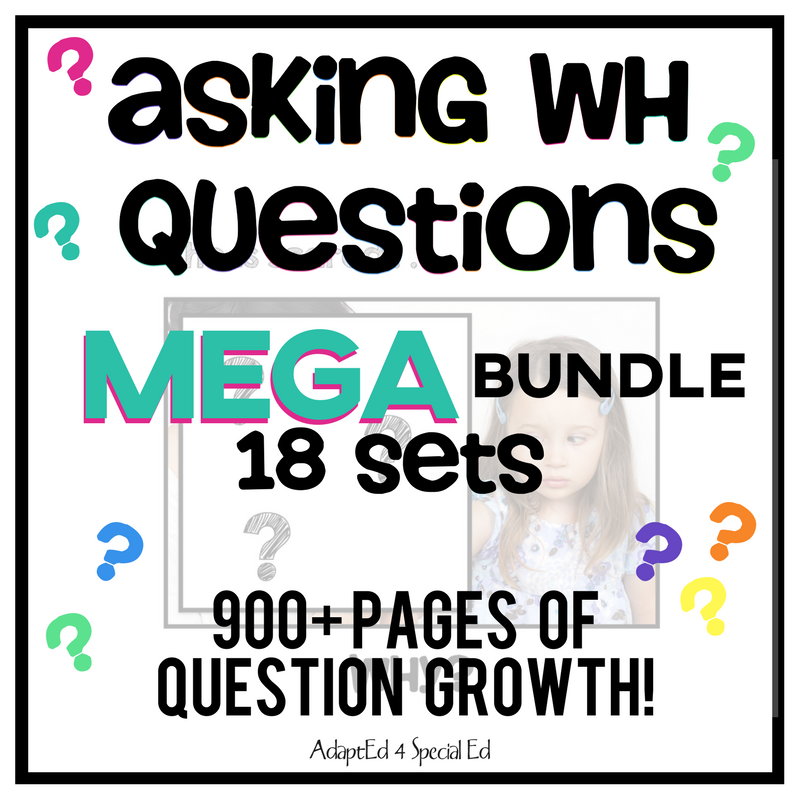
Core Vocabulary- Why and How to
By Krystie | Speech and Language
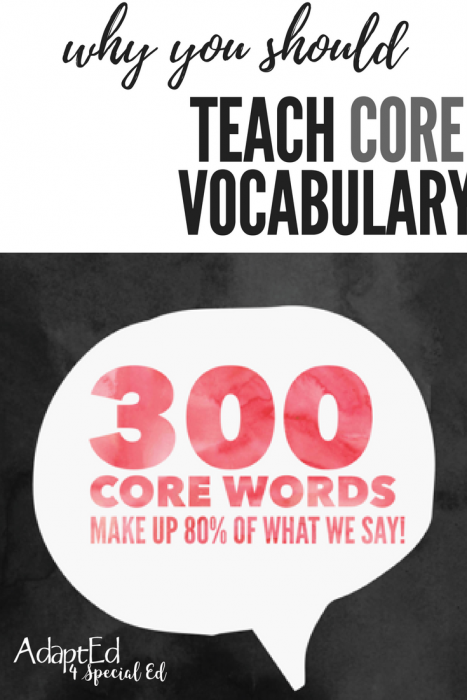
What is Core Vocabulary?
Core Vocabulary is beginning to enter the limelight. To many of us it may seem like the hottest new thing. However, in truth, core vocabulary has been around for many years.
The early exercises in core vocabulary began with linguists who took immense samples of spoken and written language and analyzed them (I like to think of it as a language sample to the power of a million). What those gigantic samples offered was a look into the everyday use of language. As it turns out, there is a relatively small chunk of words (roughly 350 words) that people use in order to communicate about 80% of what they say.
In other words, we use and re-use the same high-frequency words throughout the day for the majority of our communication. These 350 or so words are what we refer to as “core vocabulary” because they make up the core of our communication.
What may be surprising are the types of words that are part of this core group- words like “it,” “go,” “put,” “stop,” “little.”
These words may seem insignificant in the face of burlier words like “stethoscope” and “volcano,” but they pack a much bigger punch. Consider it this way: have you used the words stethoscope or volcano today?
Maybe you have if you are a doctor or are planning your next vacation to Hawaii, but I’m going to safely assume that it’s those other words like “it” and “go” that have been rolling off of your tongue all day.
This knowledge that we can say a whole lot with a pretty small group of words has extremely important implications for our special education students. With exposure and access to that small group of core vocabulary students can communicate in all the ways that are natural to us: commenting, asking, requesting, initiating conversation, rejecting, expressing feelings and so on.
With access to core vocabulary words there is access to sentence building and free expression.
It’s the difference between giving a student an icon for all of the items he may come across at the doctor’s office (there’s that stethoscope!) and giving a student icons for more powerful words such as “scared” “what?” “hurt here.”
Core vocabulary is, in essence, using a little to say a lot.
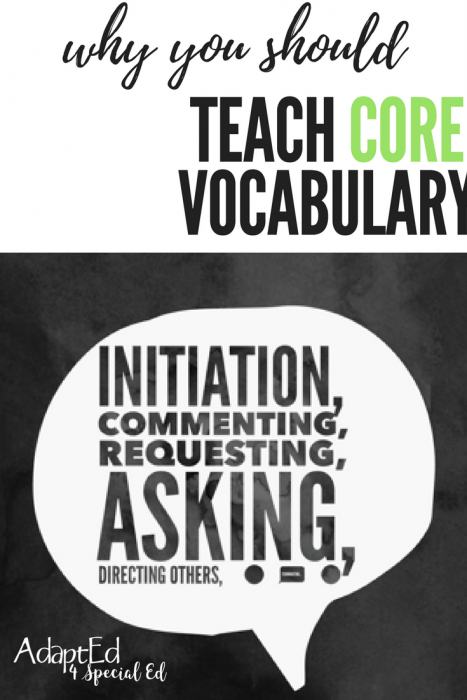
What Does CORE Mean for Our Students?
As an SLP (or educational professional in general) there are always opportunities to learn new things- always a plethora of new ideas and concepts waiting to be explored. This can be exciting and refreshing, but it can also be overwhelming at times.
For me, core vocabulary started out as one of those overwhelming things.
I had heard about it here and there and I was genuinely interested, but at that time it only existed as a buzz word on the periphery of my daily work. Looking back it seems that there was a clear path that I needed to travel in order to get to where I am now- a place of involvement, motivation and hope.
For me, there have been three key parts of this journey: 1) The realization, 2) The knowledge and 3) The liftoff.
With any luck, hearing about this journey can help you navigate your own journey and, MOST IMPORTANTLY, take core vocabulary out of the periphery and bring it into focus.
Part 1: The CORE Realization
I was at Closing the Gap 2014 in Minnesota when I got my first real taste of core vocabulary. To preface this, I had come from a world where it was the norm for students to be using loose pictures or a selection of icons on a page-based system to “communicate” throughout their day. But there was a rampant problem: they weren’t communicating.
Of course there were personal successes here and there, but overall my students were not learning to communicate.
At best, they were learning to make requests. Requests for cookies, crackers, breaks and play time with the forever-requested tablet. Now, to give everyone their due, the whole team had worked very hard to make requesting a success.
The hardest workers of all were the students.
But it was that first video clip I saw of a classroom using core vocabulary to actually communicate (to comment and question and converse!) that changed my entire outlook on AAC.
I saw students using single words to make profound statements (“Don’t!” “Go” “Stop” “Look”).
I saw students experimenting and putting words together to get their own unique messages across (“I do it” “Want that” “I like it”).
I saw teachers communicating with students, students communicating with each other, and a program with enough strength to support language growth throughout the entire day. In an instant I was convinced that core vocabulary was going to offer so much more to my students.
What was the moment of realization for you? Have you had it yet?
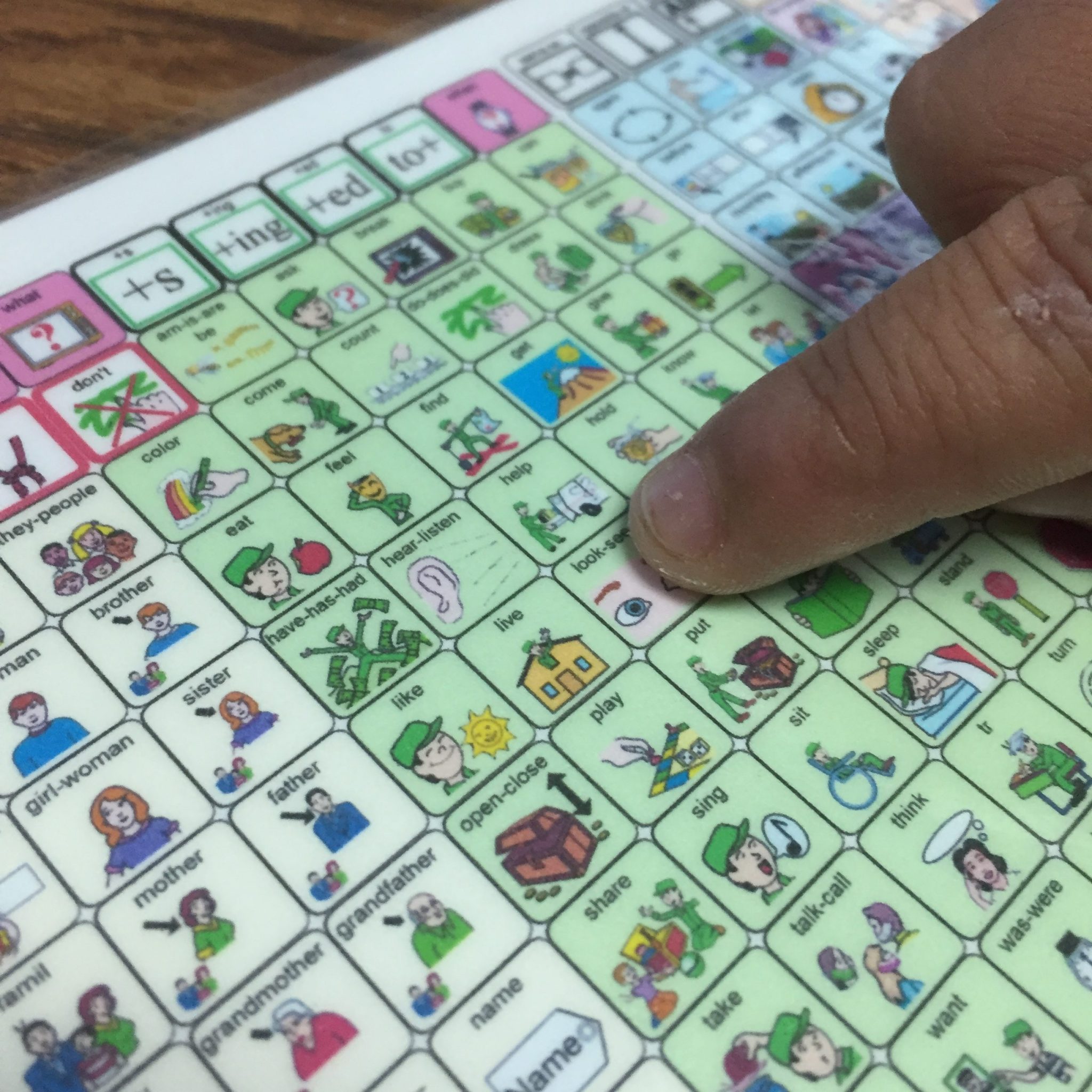
Part 2: The Knowledge
Our gut feelings are some of our most important tools. As clinicians and educators we know this. My gut feeling that I needed to implement core vocabulary was a strong first step.
However, a gut feeling can only get you so far. The next step in the journey is education. It’s not enough to know that something works. To be truly invested, we need to understand why it works.
In an effort to better grasp this thing called core vocabulary I needed to jump in headfirst and get educated. I began where most of us do- with a good old internet search. There are a lot of fantastic resources out there.
One of the most well-known blogs for AAC was one of my first stops: PrAACtical AAC. I bounced around and collected information from wherever I could, but decided I would benefit from grasping the big picture.
That’s the mindset that eventually brought me to the Pittsburgh AAC Language Seminar Series. Unlike anything else I have ever heard of, this seminar is a 2 & ½ day immersion in all that is core. Learning from some of the most influential people in the AAC field (name dropping Bruce Baker, Tracy Kovach, and Caroline Musselwhite!) is a surefire way to ground yourself in the basics.
And, just in case the impressive presenters aren’t quite enough to get you off of your seat and moving, there are other amazing perks to the experience. How about FREE registration?! How about meals and lodging provided?! In case it sounds too good to be true, I can personally vouch that this was easily the most hospitable experience of my life!
Interested in seeing if the Pittsburgh AAC Language Seminar Series might be a good fit for you? Check it out here:

Part 3: The Liftoff: How to Implement CORE Vocabulary
Rolling out a core vocabulary program bridges the gap between “interesting” and “practical.” Each day is a test drive, but one that is backed by knowledge and inspiration.
If you are lucky then you have colleagues who have been going on this exploration of core vocabulary with you (I was lucky!) But, regardless of whether or not you start as a team or as a solo act, the first stage in the “liftoff” is spreading the word.
For me, as an SLP, this meant that I needed to reach a variety of people. I needed to reach out to administrators, to other SLPs, and to special education teachers. I took what I had learned about core vocabulary and organized it.
It seemed to make sense that all of the information that had motivated me would motivate others as well.
This, in a surprisingly short period of time, turned into what looked like a suitable presentation on the topic. I started slowly. I had some laidback talks with a program coordinator about what I had learned and why it could be so beneficial to our special education program. The more I talked about the knowledge I had acquired, the deeper rooted it became.
I knew once people had a glimpse, that core vocabulary would appeal to them- at least to some of them initially. This is where a team can start to form. If you spark an interest then people will come to you for more (which is pretty handy when you are ready to move on from that solo act)!
-Meg
